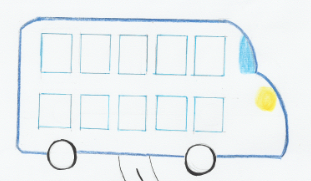Hello everybody. Today my post is about how we can
choose books for our future students. This is an important decision because to
acquire a taste for reading it is necessary to read about what we really like
and we, as teachers, should encourage our students to read, for the pleasure of
reading.
I am going to explain you some criteria that we can use
in order to choose the adequate book.
1st Criterion: Age of the student.
We have to take into account the evolutionary stage in
which the children are.
Depending on their age, kids like different topics,
for example, they normally like stories where the main character is a child
like themselves between five and seven years old, and with extraordinary events
like superheroes or wizards.
2nd Criterion: The length of the book.
This criterion is linked to the first one, because
depending on the age and the ability to read of the child, he/she can read longer
books. We should keep in mind that the
children have to be able to follow the story without missing the reading.
3rd Criterion: The language.
The language has to be adequate for the students’ knowledge;
the books can have words that they do not know, but not so complicated. The verbal
structures should be known by the children, the book cannot have new structures
because the children will not understand them. It is important to know that the
presence of repeated structures, onomatopoeias and parallels structures catch
the attention of kids because they can guess what the next sentence is going to be and this
makes kids feel secure. For example, in Snow
White story they can guess what the Stepmother is going to say when she
looks at herself in the mirror (“Mirror,
mirror on the wall, who is the loveliest lady in the land?”).
4th Criterion: The structure.
The book has to have a lineal structure: presentation
of the characters, the crux where the problems occur and an ending where the
problem is solved. For example in the Three
little pigs we can differentiate the three parts, first one presentation of
the three pigs, the second one where they make their houses and the wolf
destroys two of them and the last one where they can survive thanks to the
brick house.
5th Criterion: The topic.
It is important to know what children like. Depending
on their interests we can catch their attention with different stories. We can find
some books where the main character has some relation to the kids, thus we
catch their attention.
I think that we have to bear in mind these five
criteria to select the books for our future students, not only in English, we
can use them in Spanish too. The most important thing is to read the book
before the children do, because you have to know the characteristics of it, not
only the students’ characteristics.








